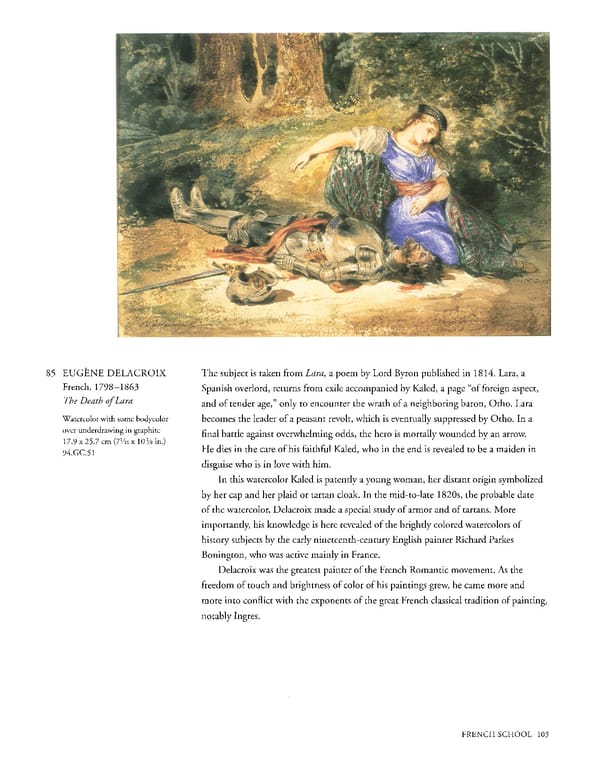85 EUGENE DELACROIX The subject is taken from Lara, a poem by Lord Byron published in 1814. Lara, a French, 17981863 Spanish overlord, returns from exile accompanied by Kaled, a page "of foreign aspect, The Death of Lara and of tender age," only to encounter the wrath of a neighboring baron, Otho. Lara Watercolor with some bodycolor becomes the leader of a peasant revolt, which is eventually suppressed by Otho. In a over underdrawing in graphite final battle against overwhelming odds, the hero is mortally wounded by an arrow. 17.9 x 25.7 cm (7 1/16 x 10 in.) 94.GC.51 He dies in the care of his faithful Kaled, who in the end is revealed to be a maiden in disguise who is in love with him. In this watercolor Kaled is patently a young woman, her distant origin symbolized by her cap and her plaid or tartan cloak. In the midtolate 1820s, the probable date of the watercolor, Delacroix made a special study of armor and of tartans. More importantly, his knowledge is here revealed of the brightly colored watercolors of history subjects by the early nineteenthcentury English painter Richard Parkes Bonington, who was active mainly in France. Delacroix was the greatest painter of the French Romantic movement. As the freedom of touch and brightness of color of his paintings grew, he came more and more into conflict with the exponents of the great French classical tradition of painting, notably Ingres. FRENCH SCHOOL 103
 Masterpieces of the Getty Museum: Drawings Page 103 Page 105
Masterpieces of the Getty Museum: Drawings Page 103 Page 105